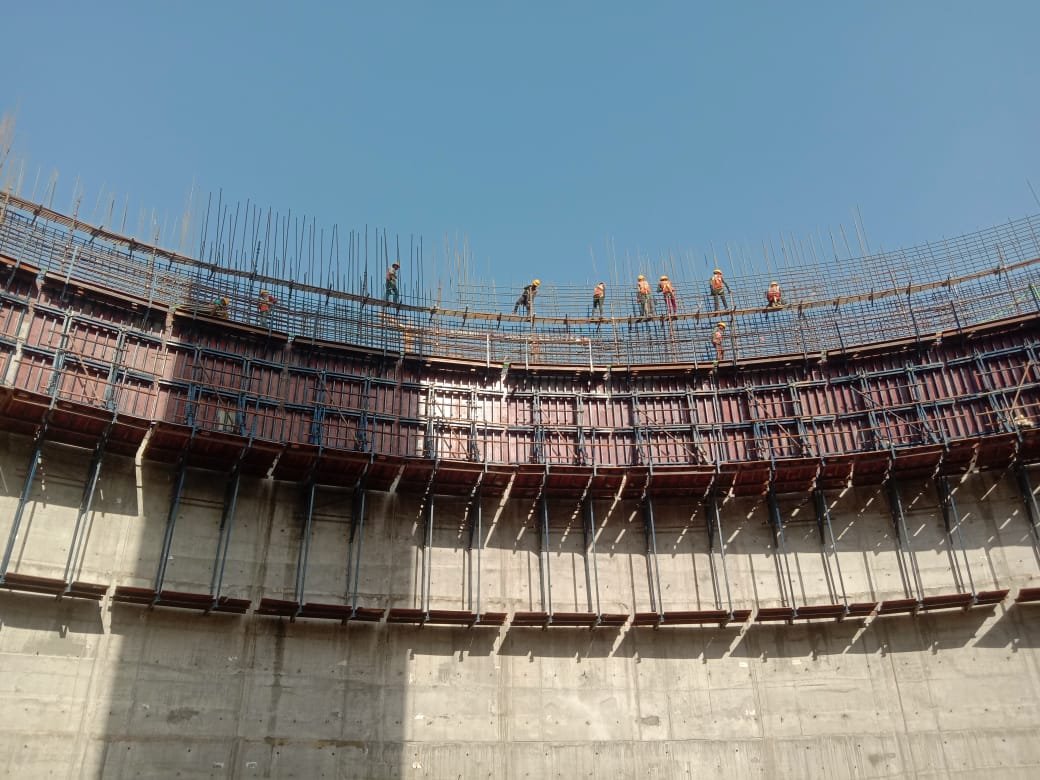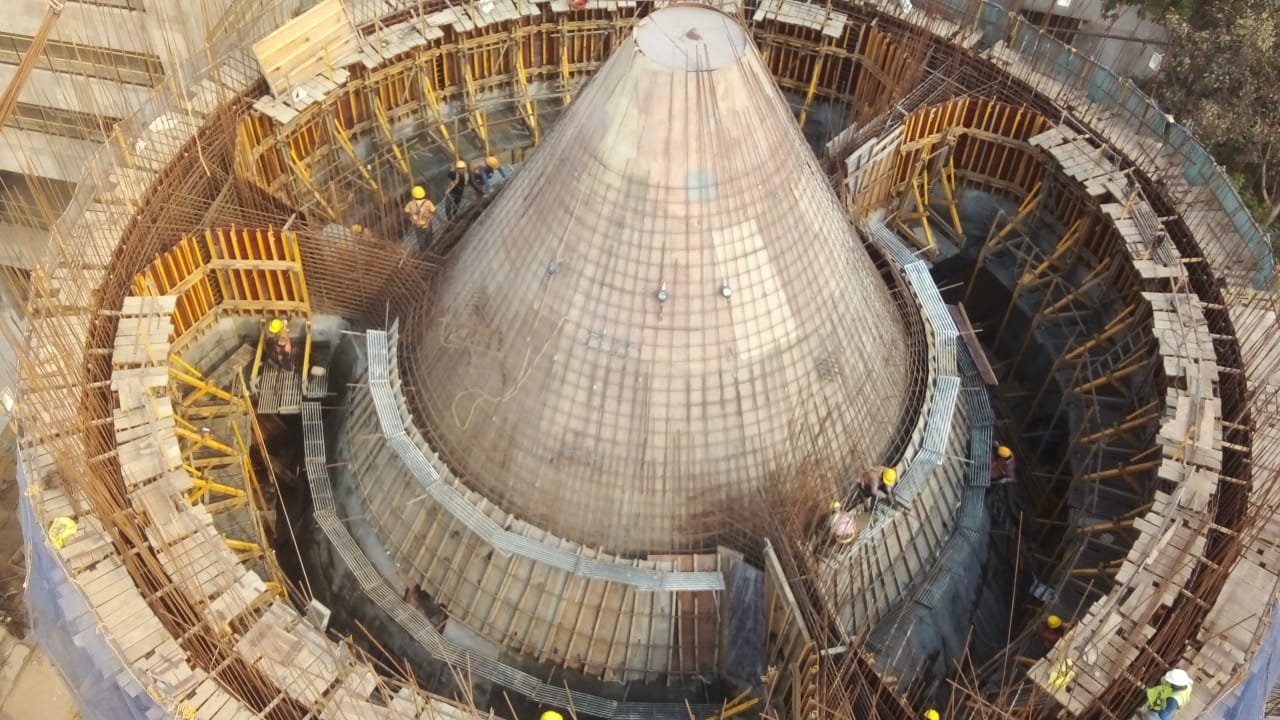Climbing Formwork: The Game-Changer in High-Rise Construction Projects
India’s skyline is rising fast, and with it comes the demand for faster, safer, and more efficient construction technologies(source). Used in skyscrapers, commercial towers, and bridge pylons, this system has become an essential tool in modern construction. In this blog, we explore how climbing formwork works, its advantages, and why it’s the go-to solution for high-rise projects.
What is Climbing Formwork?
It is a formwork system designed to build tall concrete structures like columns, walls, and building cores as construction progresses upward. It is designed to 'climb' the structure as construction progresses upward. This can be done either through hydraulic systems (self-climbing) or with the help of cranes (guided climbing). The system consists of formwork panels, brackets, and climbing equipment that move vertically, eliminating the need to dismantle and reassemble forms at every level.To learn more about our customizable climbing systems, visit our Climbing Formwork page.

Key Benefits of Using Climbing Formwork
![]() Ideal for tall structures: Designed for high-rise applications where
repetitive vertical casting is required.
Ideal for tall structures: Designed for high-rise applications where
repetitive vertical casting is required.
![]() Enhances site safety: Provides a secure working platform for
laborers at
height.
Enhances site safety: Provides a secure working platform for
laborers at
height.
![]() Speeds up construction: The repeatability of the system shortens
construction
cycles.
Speeds up construction: The repeatability of the system shortens
construction
cycles.
![]() Reduces crane usage: Self-climbing systems eliminate the need for
cranes,
freeing up equipment for other tasks.
Reduces crane usage: Self-climbing systems eliminate the need for
cranes,
freeing up equipment for other tasks.
![]() Cost-efficient: Reduced labor and faster timelines mean better
ROI for
developers.
Cost-efficient: Reduced labor and faster timelines mean better
ROI for
developers.
![]() Improves surface quality: Provides a smooth, fair-finish concrete
result.
Improves surface quality: Provides a smooth, fair-finish concrete
result.
Common Use Cases in India
Climbing formwork is commonly used in:
![]() Residential and commercial high-rises
Residential and commercial high-rises
![]() Industrial silos and cooling towers
Industrial silos and cooling towers
![]() Bridge pylons and metro piers
Bridge pylons and metro piers
![]() Elevator shafts and core walls
Elevator shafts and core walls
Many Indian developers and infrastructure firms have adopted this system for projects in Mumbai, Bangalore, Chennai, and other growing cities.

Types of Climbing Formwork Systems
![]() Guided Climbing Formwork: Relies on cranes and guide rails to climb.
Guided Climbing Formwork: Relies on cranes and guide rails to climb.
![]() Self-Climbing Formwork: Operates using hydraulic jacks, eliminating the need
for cranes.
Self-Climbing Formwork: Operates using hydraulic jacks, eliminating the need
for cranes.
![]() Jumpform systems: A flexible method frequently used for recurring vertical
structure casting.
Jumpform systems: A flexible method frequently used for recurring vertical
structure casting.
![]() Protected Climbing Systems: Includes wind protection and enclosed platforms
for added safety in tall buildings.
Protected Climbing Systems: Includes wind protection and enclosed platforms
for added safety in tall buildings.
Comparison of Climbing Formwork Types
| Type | Movement | Best For | Crane Required? |
|---|---|---|---|
| Crane-Lifted | Lifted manually by crane | Medium-height projects | Yes |
| Self-Climbing | Hydraulic/jack-based auto movement | High-rise buildings & towers | No |
| Guided Climbing | Climbs on rails or anchors | Bridge pylons, lift cores | Optional |
Why Choose Rarovah as Your Climbing Formwork Partner?
At Rarovah, we understand the complexity of high-rise construction. We design our climbing formwork systems to deliver unmatched strength, accuracy, and on-site safety. Whether you're constructing commercial towers or bridge structures, we provide:
![]() High-grade steel modular formwork systems
High-grade steel modular formwork systems
![]() On-site technical guidance
On-site technical guidance
![]() Customized solutions tailored to your project
Customized solutions tailored to your project
![]() Dependable delivery and service across India
Dependable delivery and service across India
Partner with us to accelerate your project timelines and reduce on-site challenges.
Frequently Asked Questions About Climbing Formwork
- Crane-lifted climbing formwork – Moved manually using a crane.
- Self-climbing formwork – Uses hydraulic jacks to move automatically.
Conclusion
Climbing formwork is not just a technical solution—it’s a strategic advantage in today’s fast-paced construction industry. With its speed, safety, and reusability, it empowers developers to go higher, faster, and more efficiently.
Looking for a reliable climbing formwork system for your next high-rise project?
Contact Rarovah or explore our full range of solutions at www.rarovah.com..